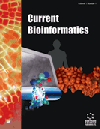
Full text loading...

Transmembrane proteins are essential for elucidating human disease mechanisms. This study establishes a comprehensive, current database of transmembrane protein mutations to advance research into disease processes and therapeutic innovation.
The study constructed a robust database of transmembrane protein mutations by integrating data from Swiss-Prot, Humsavar, COSMIC, and ClinVar. The Variant Effect Predictor (VEP) was employed to predict the functional consequences of mutations, and mutation sequence generation scripts were developed to generate and annotate mutation sequences. Stringent filtering criteria were applied to ensure data quality, and a thorough analysis of mutation types, distribution, and impact levels was conducted.
The resulting dataset encompasses 138,235 entries across 202 annotation fields, incorporating standard identifiers (e.g., gene names, Ensembl IDs, genomic positions), as well as additional functional effects fields generated by different methods. The dataset is publicly accessible at http://tmliang.cn/memPmut/.
The database highlights the functional significance of missense mutations and the prevalence of subtle effects from moderate-impact variants. Nucleotide transition biases suggest potential hotspots, while the web server facilitates research into disease mechanisms and therapeutic targets.
This study provides a cohesive, high-quality database that aids the research on transmembrane protein mutation by consolidating diverse data sources and hundreds of mutation function effects.